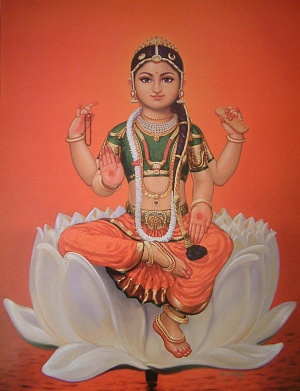News
-
 Pranayama workshop, Mar 1-7
Pranayama workshop, Mar 1-7
-
 21-day Pranayama challenge
21-day Pranayama challenge
-
 Nāda meditation workshop, January 8-12
Nāda meditation workshop, January 8-12
-
 April 3, Navaratri with Yogi Matsyendranath Maharaj, Australia, Queensland
April 3, Navaratri with Yogi Matsyendranath Maharaj, Australia, Queensland
-
 March 17, 2020. Purifiying Pranayama With Yogi Matsyendra Nath
March 17, 2020. Purifiying Pranayama With Yogi Matsyendra Nath
-
 November 2019, Tantra Workshop Series in Argentina
November 2019, Tantra Workshop Series in Argentina
-
 Workshop in Gualeguaychu
Workshop in Gualeguaychu
-
 17-18 November 2018, Yogi Matsyendranath in Źarate (Argentina)
17-18 November 2018, Yogi Matsyendranath in Źarate (Argentina)
-
 15-16 November 2018, Yogi Matsyendranath visit to Uruguay
15-16 November 2018, Yogi Matsyendranath visit to Uruguay
-
 12 Nov 2018, Lecture at USAL (Salvador University)
12 Nov 2018, Lecture at USAL (Salvador University)
-
 10-11 November 2018, Workshops in Quilmes and La Plata (Argentina)
10-11 November 2018, Workshops in Quilmes and La Plata (Argentina)
-
 8 November 2018, Open conference in Necochea (Argentina)
8 November 2018, Open conference in Necochea (Argentina)
-
 2,3,4 November 2018 - Participating in XVI Retreat International of Yoga and Meditation
2,3,4 November 2018 - Participating in XVI Retreat International of Yoga and Meditation
-
 Programme in Québec (Canada) 13-16 June
Programme in Québec (Canada) 13-16 June
-
 Melbourne Book Launch
Melbourne Book Launch
-
 4-years Summer Program
4-years Summer Program
-
 Biography of a Russian Yogi
Biography of a Russian Yogi
-
 November 2017, Visit of Yogi Matsyendranath to Argentina
November 2017, Visit of Yogi Matsyendranath to Argentina
-
 Satsangs of Yogi Matsyendranatha Maharaj in Berlin
Satsangs of Yogi Matsyendranatha Maharaj in Berlin
-
 Seminars and trainings in June-July 2015 (France)
Seminars and trainings in June-July 2015 (France)
Bala
Bala
 बाला, bālā
बाला, bālā
"a girl"
An eternally young Goddess, revered in Shrividya and among the Naths.
Bala in Shrividya
In Srividya, Bala is a form of Lalita Tripurasundari, the main Devata of this tantric tradition. It is believed that Bala is 8 or 9 years old and that she arose from Lalita's heart, or is her daughter.
As a rule, Balasundari becomes the first to be worshiped by the disciples of Srividya.
Yantra Devi represents the three inner chakras – the center of the famous Shri Yantra, illustrating the mystical structure, the evolution of the Universe.
The main mantra of Bala is a three–syllable one. It contains the hidden power of the adult Goddess mantra, consisting of more syllables. In fact, all the main mantras of Shrividya originate from the Bala mantra.
ऐं क्लीं सौः
aiṁ klīṁ sauḥ
aiṁ — a speech bija,
klīṁ — Kama bija (desire),
sauḥ — Shakti bija (power).
Bala in Nath tradition
One of the dikshas in the Nath Sampradaya, known as upadesha-diksha, implies Bala worshiping. For yogis, it symbolizes akhanda-jyoti or aparampara-jyoti (the infinite light of Shiva) and is considered the highest manifestation of Shakti, beyond time and directly related to Gorakshanath, who is also eternally young, that is, immortal. Both of them are the epitome of living energy, openness to everything new, and the absence of worldly heaviness.
Balasundari is Yogamaya, Karunamaya, the Goddess of mercy, bestowing yoga knowledge to the sadhaka and protecting him on the spiritual path.
In the practices of her veneration a special yantra is used, which is divided into four parts, symbolizing four yugas. In the center is Bala in yamala (union) with Shiva. She is his Nija-shakti, or Kundalini.
Shabar-mantra Yogamaya Balasundari
ॐ सों इलीं क्लीं श्रीं सों श्रीं सुन्दरी बाला नमः
oṁ sōṁ Ilīṁ klīṁ śrīṁ sōṁ śrīṁ sundarī bālā namaḥ
In essence, this is a modified mantra of Bala from Shri vidya: some bijas are compressed according to the pratyahara principle, some, conversely, are revealed.
Bija सों sōṁ is a combination of सोऽहं sō̕haṁ and Para (Shakti)-bija सौः sauḥ. Bija इलीं ilīṁ is just a modified ऐं aiṁ (vac-bija) since ऐं aiṁ is not anything else than sandhyakshara of अ + ई, although there may be their short options. [Combining अ + ई] we get ए, then if we add अ to it again, we get ऐ. In the same way as with combination of अ + उ we get ओ, with bindu it will be Pranava ओं, and if we strengthen it, we get औ, which may be part of the bija सौः that is named Shakti-bija, sometimes Para-bija. Inherently, इलीं can be conceived as a compressed form that expands from इ to ल, the last akshara of sanskrit alphabet (matrika), except the first akshara अ, from which the entire matrika arises. Bija क्लीं klīṁ is kama-bija without modifications.
Guru Yogi Matsyendranath Maharaj
Nath Bala and Shrividya Bala are almost identical, but yogis immediately worship Goddess as young and at the same time as mature, who can simultaneously be Kali, for example. In Shrividya, the most common system of worship is the veneration of the "maturing" Shakti. First, the girl Bala is revered, then the 15-years-old Panchadashi, further the 16-years-old Shodashi, and only then, when Devi is adult, she can be Durga, Kali, Pratiangira, etc. In other words, in Tantrism there is a long and powerful preparation for painlessly combining blissful and wrathful energies in practice. The Nath path, Sadhu, is more direct and faster, because they can immediately make a leap to where the differences converge in one point.
Source: matsyendranatha.com

